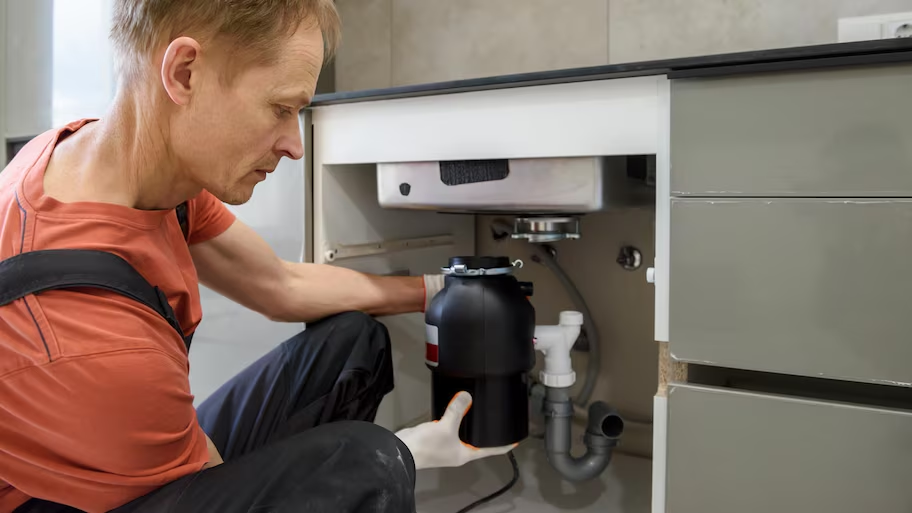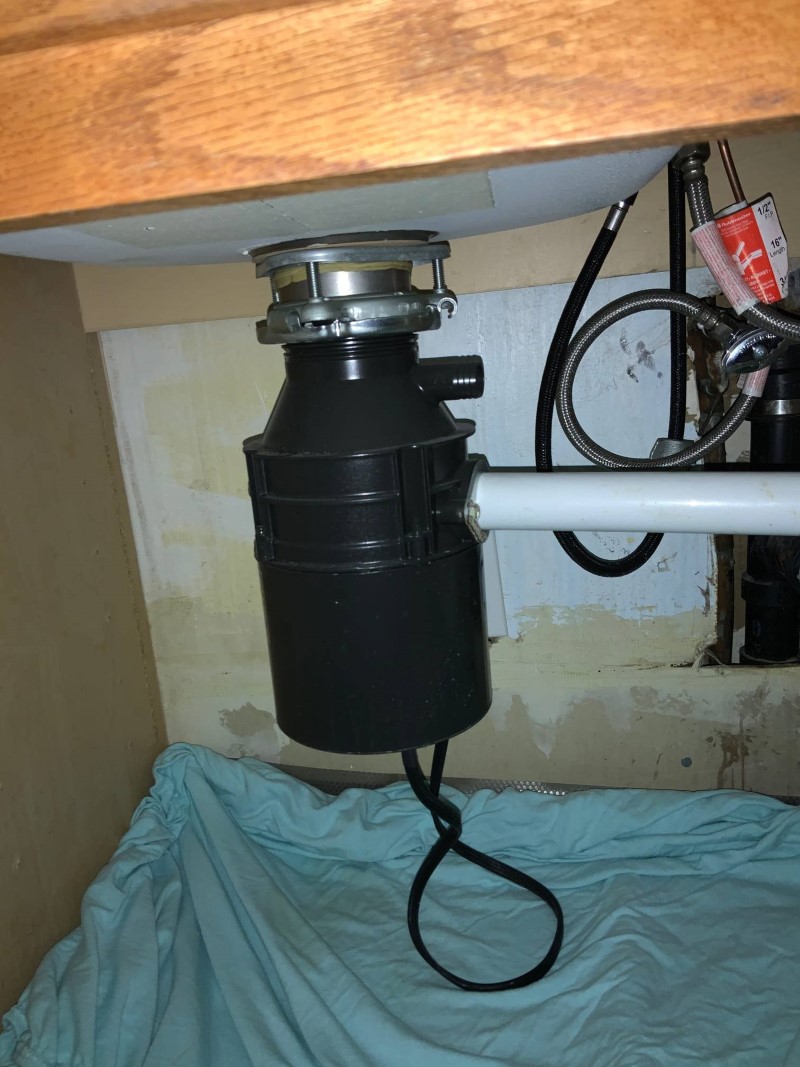Handy Techniques for Repairing a Dripping Garbage Disposal
Handy Techniques for Repairing a Dripping Garbage Disposal
Blog Article
Presented here in the next paragraph you will find additional decent ideas around Why Is My Garbage Disposal Leaking From the Bottom?.

Waste disposal unit are important kitchen area devices that help in throwing away food waste effectively. Nonetheless, a dripping waste disposal unit can be an aggravating and unpleasant problem to handle. The good news is, many leakages can be taken care of easily with a couple of straightforward actions. In this post, we will certainly go over how to fix a dripping garbage disposal efficiently.
Intro
Garbage disposals are installed under kitchen area sinks and are designed to shred food waste right into smaller pieces, allowing it to go through the plumbing system quickly. While these devices are usually trustworthy, leakages can occur over time as a result of damage, loosened links, or damages to the system.
Usual Sources Of Leakages in Garbage Disposals
Worn Seals and Gaskets
Seals and gaskets play an essential role in preventing water from dripping out of the waste disposal unit. In time, these elements can wear away, leading to leaks around the disposal unit.
Loose Connections
The connections between the garbage disposal and the plumbing system can come to be loosened with time, creating water to leakage out throughout procedure.
Cracks or Holes in the Disposal System
Physical damages to the garbage disposal, such as cracks or openings in the housing, can also result in leakages.
Recognizing the Source of the Leakage
Prior to attempting to fix a leaking waste disposal unit, it is necessary to identify the resource of the leakage. This can normally be done via aesthetic examination or by carrying out straightforward tests.
Visual Evaluation
Examine the garbage disposal unit carefully for any kind of indicators of water leak. Pay very close attention to areas around seals, gaskets, and link factors.
Evaluating for Leaks
One way to examine for leakages is by running water via the disposal device and looking for any type of visible indicators of leakage.
Tools and Materials Needed for Dealing With a Leaking Garbage Disposal
Before beginning the repair procedure, gather the essential devices and materials, consisting of a screwdriver, flexible wrench, plumbing professional's putty, replacement seals or gaskets, and epoxy or patching material for fixing cracks or openings.
Step-by-Step Overview to Fixing a Leaking Waste Disposal Unit
Shut off the Power
Before trying any type of repair services, make certain that the power to the waste disposal unit device is shut off to avoid the risk of electric shock.
Find the Leak
Identify the precise place of the leak and determine the cause.
Tighten up Links
Make use of a wrench to tighten up any kind of loose links between the disposal system and the plumbing system.
Replace Seals or Gaskets
If the leakage is because of worn seals or gaskets, get rid of the old parts and change them with brand-new ones.
Patching Fractures or Openings
For cracks or holes in the disposal unit, use epoxy or an ideal patching material to secure the broken location.
Checking the Garbage Disposal After Repair Service
When the repair service is total, evaluate the waste disposal unit by running water through it to make sure that the leakage has actually been settled.
Preventive Upkeep Tips to Stay Clear Of Future Leaks
To stop future leakages, it is necessary to perform normal maintenance on your waste disposal unit. This consists of maintaining it clean, preventing placing non-food things or tough items down the disposal, and occasionally looking for leaks or various other concerns.
Final thought
Finally, fixing a leaking waste disposal unit is a reasonably uncomplicated procedure that can be finished with basic tools and materials. By complying with the actions outlined in this short article and practicing preventative maintenance, you can keep your garbage disposal in good working condition and prevent expensive repair services in the future.
What to Do About a Leaking Garbage Disposal
A leaking garbage disposal often goes unnoticed until you confront a sopping cabinet, a foul-smelling puddle, or an audible drip-drip-drip from the unit. The fix can be frustrating, too, because the leak can stem from a number of components in the system. Fortunately, with a little sleuthing, you can zero in on the leak and—depending on the exact location—stop the icky oozing and repair the component that caused it. Worst case scenario, if it turns out that the garbage disposal must be replaced, installing a new one is a reasonable do-it-yourself task for those with basic plumbing skills. Read on to keep the cash you’d otherwise hand over to a pro.
Prepare to find the leak
Prior to testing the garbage disposal for leaks, unplug it at the wall outlet and turn off the power from the breaker box to prevent electrical shock. Then insert a watertight sink stopper into your sink drain and wipe the unit dry with a clean cloth. In any handy container, mix a few drops of food coloring into a few cups of water, and pour the dyed water onto the sink stopper to help you locate the leak.
Investigate the source
the top, where the disposal meets the sink drain the side, where the dishwasher hose or main drain pipe connects to the disposal or the bottom of the unit Inspect each of these locations while gliding a light-colored rag over the unit; the dyed water will readily show on the rag and reveal the location of the leak. If a leak isn’t immediately apparent, remove the sink stopper and pour a few more cups of dyed water down the sink drain, then check for leaks again. Leaks near the top of the unit are more likely to show themselves while the sink is plugged, while side and bottom leaks are more noticeable while the sink is unplugged.
The metal sink flange that sits directly inside the sink drain is typically sealed around the top with plumber’s putty (a clay-like sealant) and then secured from under the sink with bolts. If the plumber’s putty deteriorates, or the bolts loosen, the flange can no longer form a watertight seal between the sink drain and the disposal—which could cause a leak at the top of the unit.
To reseal the leaky flange, you must first detach the garbage disposal. Start by loosening the screws securing the main drain pipe to the disposal, then loosen the screws in the metal clamp securing the dishwasher hose to the disposal and detach the drain pipe and dishwasher hose from the disposal. Loosen the screws in the mounting ring that connects the disposal to the metal mounting assembly beneath the sink, then pull down the disposal and carefully set it on a clean, dry surface. Loosen the bolts in the mounting assembly with a wrench, then pull down the mounting assembly and set it near the disposal.

I was made aware of that write-up on How to fix a pretty consistent leak from my garbage disposal through an associate on our other web blog. Are you aware of anybody else who is enthusiastic about the topic? Do not hesitate to promote it. We enjoy reading our article about Why Is My Garbage Disposal Leaking From the Bottom?.
Quote Report this page